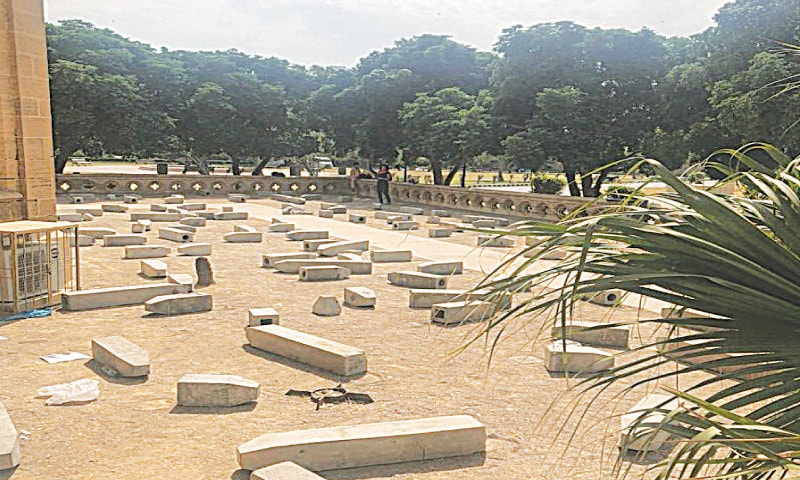I first started looking at censorship in art about a year ago — researching, talking to people and formulating opinions. With a fully-formed argument in my mind, I only had to find the time to sit and pen it down, but somehow it got pushed to the back burner — until November last year, when KB19 took place. The ‘Killing Fields of Karachi’ incident changed my limited perspective on the matter, as we witnessed some of the most brutal forms of violations of free speech seen in the art world in recent memory. It brought to the fore the fears that had been bubbling beneath the surface. It made abundantly clear where we stand when it comes to censorship in art in the country.
In the past, artists have had to deal with strict controls, specifically during Gen Ziaul Haq’s dictatorship, which checked cultural growth and artistic expression to an alarming level. However, the art that did flourish during the time was some of the boldest ever, pushing back and challenging the oppressor, such as the works of Ijaz ul Hassan, Salima Hashmi and Nagori.
While censorship now is rarely as blatant as it was under the Zia regime, it has contributed to an underlying fear, which acts as a deterrent for certain kinds of artistic practices — a form of self-censorship. Galleries in Pakistan are more or less private spaces, visited by a select few, and thus, one can see all forms of art on display. Yet, artists such as Rashid Rana have refrained from showing some of their more provocative works in the country. In my own experience, there have been instances where publications have refused to cover certain exhibitions because they displayed controversial content, which serves to push certain forms of art further into the peripheries.
However, Sameera Raja, owner of Canvas Gallery in Karachi, doesn’t believe in using the term ‘self-censorship’. “It is about having respect for that [public] space,” she says, “it belongs to you as much as it belongs to me.” During a conversation prior to the events of KB19, art critic and Karachi Biennale Trust (KBT) CEO Niilofur Farrukh said, “It is not about censorship, it is about inclusion.” Farrukh believes that there are two forms of censorship, and one of them has to do with cultural sensibilities, “[For the biennale] we took guidelines from what the public wants, because in a public space, you have to keep that in mind.”
Restrictions in art have contributed to an underlying fear which acts as a deterrent for artistic freedom and promotes self-censorship
But she agreed that it is the second form of censorship, the one sanctioned by the state, that is the problem because that is not what the public wants. When it comes to freedom of speech, our official stance as a nation is kind of a sham: Article 19 of the constitution grants it, but with certain ‘conditions’. It is these forms of censorship that are most dangerous. They can be used to shape narratives that direct public opinions to their advantage through the manipulation and omission of truth. When artist Adeela Suleman’s work at the KB19 on the extrajudicial killings by Rao Anwar was destroyed by the authorities, it was this form of censorship that was at play. Was her work not respecting the audience in that public space or was it ‘disrespecting’ the ‘authority’ of those who presume sole ownership of that space?
According to Raja, art enjoys a privileged position when it comes to censorship. Art is not mainstream and can thus get away with saying a lot. Artists have found ways to work around and against the parameters set for them, with covert and subtle expression that makes a stronger impact. However, it is apparent that, as it takes a more overt approach and dares to reach wider audiences, our worst fears are actualised. This begs the question: if art can only exist tucked away in the safe confines of the gallery, hidden within elusive metaphors indecipherable to the layman to whom it is addressed, what is really the point?
In such times, it becomes imperative for art institutions to stand up to oppressive systems and show solidarity with artists, and to keep fighting for that space.
Published in Dawn, EOS, June 14th, 2020

















































Dear visitor, the comments section is undergoing an overhaul and will return soon.